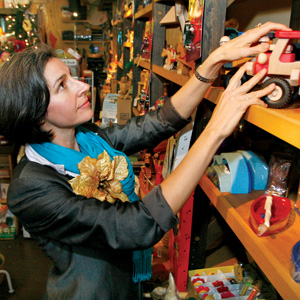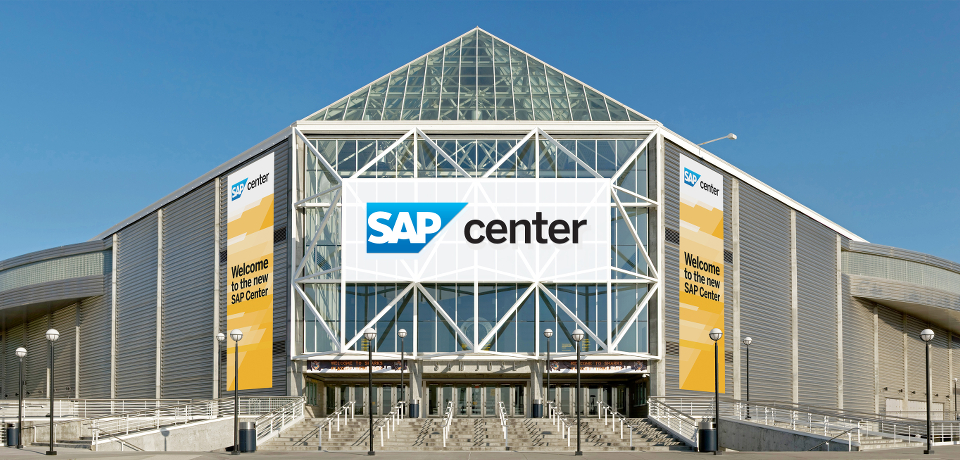For 16 years, Julia Chen at the PlayStore on University Avenue in Palo Alto has been educating her customers about the value of play. But she says it’s becoming harder.
“Parents come into the store bombarded by marketing messages. There’s so much advertising,” Chen laments. “It’s really hard for them to filter out all that misinformation.
“Play is the experience of generating ideas critically and creatively, and solving problems. Our toys inspire the question, ‘What do I want to do with this?’ Instead of ‘What am I supposed to do with this?’ The ideas for play should come from the children. So we sell well-made, open-ended toys.”
Chen is part of a growing nationwide movement to make the holiday season a tad less commercial. Think of it as a slow-foods movement for kids, wherein independent toystore owners are the organic farmers, and where Toys-R-Us and Disney are McDonald’s and Costco.
“We always remind parents that the complexity comes from the child, not the toy,” Chen says. “If the toy is complex and seems interesting to the adult, the toy designer had a lot of fun designing it but that didn’t leave very much room for your child to be creative and come up with his or her own ideas.”
Stacy Stafford Scott, owner of San Jose’s Treehouse in the Glen, subscribes to a similar philosophy.
“Our toys aren’t limited to what a corporation decides is important or will lead to more sales,” Scott says. “They feed children’s imaginations.”
Scott, who also requires that the toys in her Willow Glen store be made of nontoxic materials, says she has seen firsthand that kids still like old-fashioned, simple toys.
“Take little plank blocks,” she says. “Two-year-olds like to pour them, older children build with them, and because adults love them, they’re playing with their children, which all increase the child’s development opportunities. Toys like these have no limits.
“In my store we don’t have anything that has batteries and that’s on purpose. If it has a battery, the toy is doing everything and the child is learning how to push a button. We’re brainwashed to believe that certain toys are good for our children because we’re being told this by marketers.”
With the holiday season in full flower, retailers and marketers are hitting parents and kids hard. Josh Golin, of the Campaign for a Commercial-Free Childhood, says parents are getting a double whammy. “One pressure is coming from the kids for the must-have hot toy of the season, and the other pressure is the marketing that’s going directly to the parents saying ‘This is the leap frog product that you have to get so your child can go to Stanford or Harvard,’” Golin says.
Golin’s organization, a coalition of health-care professionals, educators, advocacy groups and parents, warns that heavily advertised toys hurt kids.
“Children are taught through advertising that if they don’t get a particular toy, this holiday season will be a failure,” he says. “It becomes easy for holidays to become all about nagging and having the perfect toy.”
CCFC warns that heavily marketed toys are advertisements for a range of other products. “A Shrek or Dora toy advertises movies, clothes and the unhealthy foods these characters help promote,” Golin says. “There are 40,000 Disney Princess items, so when you give a Disney Princess toy, you’re advertising their other 39,999 products to a child who’s told to ‘collect them all.’ You’re feeding into the commercial pressure put on children that they always have to have more.”
Taking the Fun Out of Fun
The documentary Race to Nowhere, which plays next month in Palo Alto as part of a nationwide screening, is about the pressure put on students to load up their schedules with homework and extracurricular activities—which new research says doesn’t help children. CCFC says research debunks similar myths about the role of educational toys in child development.
“Parents have been sold a bill of goods that educational toys and videos like Baby Einstein and Brainy Baby are going to help their kids get ahead and make them smarter,” Golin says. “So one of our featured campaigns has been challenging the marketing of these products.”
The organization was instrumental in getting Baby Einstein to give refunds because they were “falsely and deceptively” marketing these products, Golin says.
While national and international public health organizations like the American Academy of Pediatrics, the World Health Organization and the American Psychological Association have called for restrictions on marketing to children, the blitz goes on like never before.
In 1983, companies spent about $100 million annually marketing to children in the United States. Now they spend more than $17 billion a year. In addition to targeting children through TV and movies, they use video games, phone apps, and the Internet, as well as schoolbus billboards and fast-food wrappers. The paraphernalia of childhood is emblazoned with licensed characters and logos.
Reagan-era deregulation championed by toy and cereal manufacturers and broadcasters eliminated the FTC’s authority to limit advertising to children, making marketing to children less regulated in the United States than it is in any other Western democracy.
“The good news is there’s a tremendous push back against this,” Golin says. “We’re seeing more parents organizing and taking advertisers out of their children’s schools and really questioning what we’re doing to children when we just throw them into the marketplace.”

 Birds of a Feather
Birds of a Feather 









